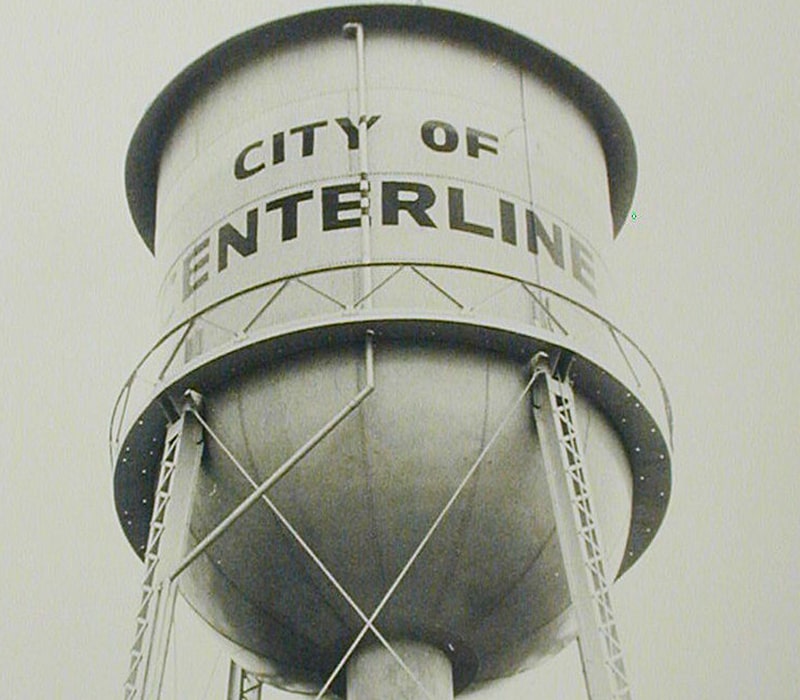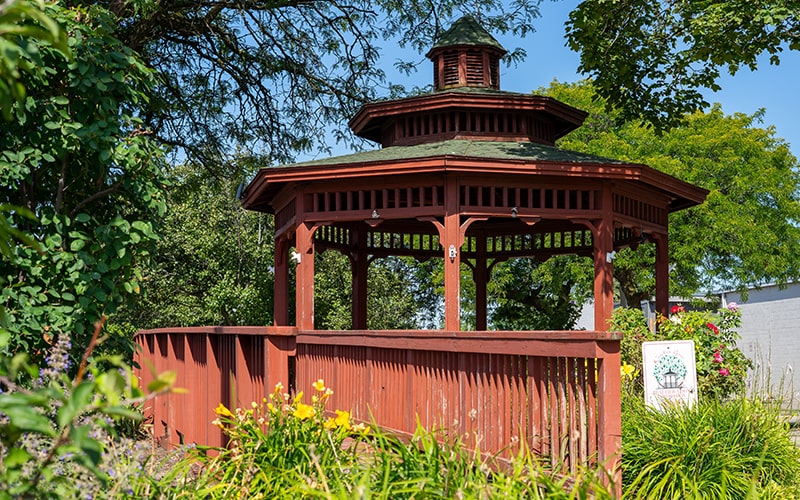One and Three-Quarter Square Miles, Strength in Sustainability
Small in Size but Large in Outlook and Dynamism
Center Line, Michigan, continues to defy expectations. Covering just one and three-quarter square miles, the city has maintained its independence and local identity while fostering steady investment and community pride. Once defined by its automotive and industrial roots, Center Line is now earning recognition for its revitalization efforts, strong partnerships, and hands-on leadership approach.
“What makes us unique,” says Mayor Bob Binson, “is that we’re a small town right in the middle of the third largest city in Michigan. We’re surrounded on all four sides, yet we manage to maintain our small-town appeal.”
That sense of identity is something residents work hard to preserve. “There’s an exceptional amount of community pride here,” says City Manager Dennis Champine. “People choose Center Line because they value connection and a sense of place. That’s something we’ve never lost.”
Motor City Roots to Modern Resilience
Historically, Center Line’s economic backbone has been its industrial and automotive sectors. “We were once the world headquarters for Mopar until Chrysler sold it to Fiat,” explains Mayor Binson. “Even now, the site remains a major property with great potential under Stellantis.”
That manufacturing legacy continues to shape the city’s identity. Generations of skilled tradespeople, engineers, and entrepreneurs have built a resilient business base that adapts to changing markets while preserving local expertise.
The city’s business community is a tapestry of long-standing family enterprises and major manufacturers. Notable employers include Ed Rinke Chevrolet, Buick and GMC; Binson’s Medical Equipment and Supplies—the largest family-owned medical equipment company in the United States; Whitlam Label; Wico Metal Products; and Stellantis’ Mopar,
Champine notes that the arrival of new players continues to diversify the economy. “Crest Ford has grown into a major business in recent years,” he says. “And since Michigan voters approved cannabis sales, Center Line has been at the forefront in Michigan. The cannabis industry has helped us repopulate our industrial zones. At one point, our occupancy rate was around 10 percent—now it’s nearly 100 percent.”
Building a Business-Friendly Future
Center Line’s leadership prides itself on being proactive and welcoming to investors. “We’ve worked hard to be a business-friendly community,” says Champine. “That effort, encouraged by Mayor Binson and the City Council, has been key to attracting new businesses.”

The city’s approach combines creativity, flexibility, and accessibility. Staff work directly with business owners to streamline approvals, assist with site selection, and connect investors with available resources. “We offer incentive programs and façade grants through our Downtown Development Authority to help entrepreneurs improve their storefronts or start up new ventures,” adds City Treasurer Joseph Sobota.
Despite a population of just 8,700, the city’s strategic location gives it remarkable reach. “We’re in the center of the most densely populated area in Michigan,” Binson says. “There are half a million people within a couple of miles of our borders. So even though we’re small, the potential customer base for any business here is massive.”
Revitalization Through Redevelopment
Redevelopment is a defining feature of Center Line’s progress. Significant projects are reshaping its economic landscape. “Crest Ford is clearing out two outdated buildings to make way for a new $19 million investment,” Champine explains. “Another site on Van Dyke, the old Michigan Wheel and Tire property, will see an additional $3 to $5 million in new investment.”
The largest project on the horizon is the transformation of the soon to be former Mopar site. “That property has been sold by Stellantis to an investor,” Champine says. “Plans are underway to demolish existing buildings and construct a million-square-foot distribution facility—a potential $300 million investment.”
Minor but equally impactful changes are occurring across the city. “O’Reilly’s Auto Parts is expanding its facility by about 10,000 square feet,” says Binson. “They’ve also made a major façade improvement. Businesses that come to the Center Line tend to stay. In fact, we recently had one—Crypt Keepers Halloween Emporium—that left for a time but has since returned. They realized the grass isn’t greener on the other side.”

Local Legends and Community Staples
Beyond the industrial zone, Center Line thrives on its family-owned businesses and community landmarks. “Our original Binson’s Pharmacy on Van Dyke is now leased to Rising Stars Academy,” says Mayor Binson. “It’s a school that teaches young adults with disabilities culinary and building skills. They’ve turned it into a coffee shop called Gather and Grounds, where students get real-world experience serving customers.”
Another beloved spot is Haney’s, a breakfast and lunch restaurant that has been part of the community for decades. “It used to be Howard Johnson’s,” Binson says. “Rising Stars recently purchased it and kept everything the same, including the famous clam strips recipe. People come from all over Michigan for that.”
Family-owned businesses are a cornerstone of Center Line’s character. “Our company started as a neighborhood pharmacy in 1953 and evolved into medical equipment and orthotics,” Binson explains. “We’re now in our fourth generation of family ownership, which is rare these days. And we’ve always kept our headquarters here.”
Champine adds that these legacies extend throughout the community. “You have families like the Rinkes, who have been here over a century, and the Novaks, who run the Rudy Funeral Home and Lee’s Florist. Even our bike shop owner, Denny, is still wrenching on bikes in his 80s. It’s rare to see so many long-standing, family-run businesses still thriving.”
Meeting Mandates with Resourcefulness
While Center Line’s small size fosters community closeness, it also presents a significant challenge in complying with state and federal mandates. “We’ve had to deal with numerous unfunded mandates,” Binson says. “For example, the state required us to make $125,000 worth of court changes but only provided $25,000 in funding.”
He also points to the costly lead and copper replacement mandates that stemmed from the Flint water crisis. “We’re required to inspect and replace private service lines, but those are on private property. It’s not fair to taxpayers who end up paying for someone else’s replacement.”
Champine elaborates on the financial strain. “We’ve secured grant dollars for identification, but not nearly enough for replacement of those lead and copper water service lines. Center Line’s annual budget is around $10 million, and our taxpayers already pay one of the highest millage rates in Macomb County. These mandates create an ongoing fiscal burden.”
Sobota provides a stark list of additional costs: “We’ve lost over $16,000 in property tax revenue from veterans’ exemptions. Early voting cost us $24,000 last year, and we were reimbursed only part of it. Our annual audit costs $36,000, and even publishing required legal notices costs thousands more. The state mandates these expenses but doesn’t fund them.”
He adds that the city’s district court—technically a state entity—costs local taxpayers $625,000 annually. “Even though it’s a state function, we pay for it,” Sobota notes. “That’s the reality of unfunded mandates.”
Advocacy, Collaboration, and Creative Partnerships
Despite the financial strain, Center Line has shown remarkable ingenuity in finding solutions. “We’ve had to think outside the box,” Champine says. “One of the ways we’ve offset costs is by opting into Michigan’s cannabis laws, which revitalized our industrial areas.”
Another innovative approach is the city’s partnership with the U.S. Army Garrison in neighboring Warren. “We’re one of only two Michigan communities with an Intergovernmental Service Agreement,” Champine explains. “Through this, we provide engineering, solid waste, recycling, and contract management services for the base. It’s a win-win-win situation—the Army saves about 25 percent compared to federal procurement costs, the city generates revenue, and local contractors earn more.”

So far, the collaboration has generated approximately $250,000 for the city and helped local contractors increase their earnings by up to 7 percent. “It’s a model for efficient, mutually beneficial government partnerships,” Champine says.
These partnerships are vital as the city continues to advocate for fair treatment. “Sometimes legislation comes as a knee-jerk reaction to localized problems,” Champine adds. “We need lawmakers to think through the broader impact on small communities like ours. Many of us have reached out to state and federal representatives to help them understand the real cost of these mandates.”
Protecting Independence, Preserving Identity
As new challenges arise, the leadership team stays united in purpose and vision. “Despite everything we’re dealing with, we’re going to do whatever it takes to keep this community special and independent,” says Binson. “Local municipalities need to be supported because we’re the ones closest to the people. You can’t understand residents’ needs from Lansing.”
Champine shares that conviction. “I grew up just a mile from here in Warren, and I would never be supportive ofCenter Line and Warren merging to save money,” he says. “This city has always been unique. Our neighborhoods, our businesses, and our people have stayed the same through generations. The past decade has been about unity—we’re all on the same page about our mission and goals.”
That mission is clear: to preserve Center Line’s small-town spirit while fostering sustainable growth. Through innovation, collaboration, and sheer determination, this city continues to thrive—proving that even in Michigan’s industrial core, independence and community pride remain its strongest assets.
AT A GLANCE
Who: Center Line, Michigan
What: A one and three-quarter square-mile city that proudly maintains its small-town identity and independence while fostering sustainable growth through innovation, collaboration, and community pride.
Where: In the heart of Metro Detroit
Website: www.centerline.gov
PREFERRED VENDORS/PARTNERS
Crest Ford: www.crestfordcenterline.com
At Crest Ford – Center Line, we’re committed to delivering outstanding value, top-tier service, and a wide selection of new and pre-owned Ford vehicles to drivers in the Metro Detroit area. Located at 26333 Van Dyke, Center Line, MI 48015. And stay tuned — our new Elite Commercial Vehicle Center facility is coming soon, designed to serve business-fleet customers and commercial van/truck needs.
AEW Inc.: www.aewinc.com
Anderson, Eckstein & Westrick, Inc. is a leading design firm since 1968 that provides civil engineering, architecture, surveying, GIS, and consulting services. We partner with municipalities, public agencies and private clients, building lasting relationships grounded in integrity and respect for the communities we serve.



